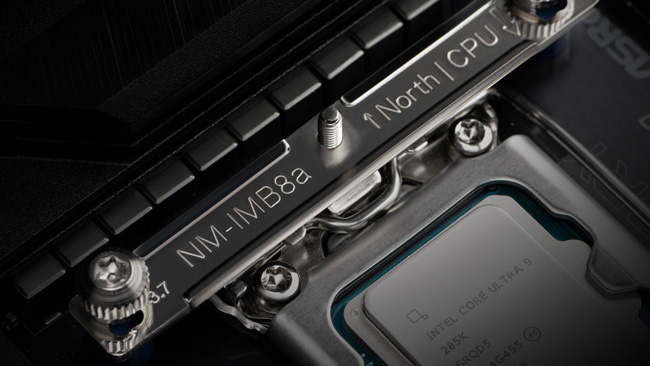Intel's next-gen Nova Lake CPUs may be backwards compatible with Arrow Lake coolers — LGA1954 and LGA1851 sockets share the same dimensions
We can only infer mechanical compatibility based on the shipping data.

Intel's upcoming LGA1954 socket for next-generation Nova Lake CPUs is rumored to match its predecessor's size and may retain cooler compatibility. Ruby_Rapids on X highlighted NBD shipping manifests detailing the socket dimensions of LGA1954. At 45mm x 37.5mm, the size remains largely unchanged, despite offering roughly 100 more pins than LGA1851. However, full compatibility is still up in the air due to potential hotspot shifts with Nova Lake, depending on how and where Intel designs the cores.
Intel's current Arrow Lake processors utilize the LGA1851 socket, which was originally designed to support the now-axed Meteor Lake-S family on desktop. Though there are whispers of a potential Arrow Lake Refresh up in the air, it is expected to mirror Raptor Lake Refresh with improved silicon, higher clock speeds, and potentially more cache.
In essence, the next major desktop release from Intel should be Nova Lake, which has officially been slated for a 2026 launch. If rumors hold true, these CPUs will use the LGA1954 socket, necessitating a new motherboard, which is a bummer if you've already invested a lot in the current platform. That being said, you may be able to keep your current cooler. Shipping data from NBD indicates the LGA1954 socket measures 45mm x 37.5mm, matching the size of LGA1851 and even LGA1700. This at least hints at mechanical compatibility for the CPU cooler.
Another Socket V series member:The package size of FCLGA1954 is 45×37.5, too.Today‘s coolers are mechanically compatible with Nova Lake-S. pic.twitter.com/BYJIwg0ANuMay 29, 2025
Here, with identical socket dimensions, we can infer a similar cooler mounting pattern. This was previously seen with LGA1156 (Nehalem/Westmere) all the way up to LGA1200 (Comet Lake/Rocket Lake), which could share the same CPU cooler due to a consistent mounting pattern (75mm x 75mm holes) throughout. Naturally, you'd need to confirm if your CPU cooler can dissipate the heat Nova Lake produces, though we don't expect it to exceed Arrow Lake in this regard.
Mechanical compatibility also does not guarantee full thermal compatibility. With the switch to a chiplet-based architecture, Intel has the flexibility to alter the placement of the Compute Tile on the interposer, or even change the positions of the P-cores and E-cores within the tile itself. For example, both core types were arranged in distinct blocks with Meteor Lake. However, Intel shifted to an interspersed layout with Arrow Lake, which directly affects thermal hotspots. All things considered, we'll need to wait for official confirmation from Intel.
Follow Tom's Hardware on Google News to get our up-to-date news, analysis, and reviews in your feeds. Make sure to click the Follow button.
Get Tom's Hardware's best news and in-depth reviews, straight to your inbox.

Hassam Nasir is a die-hard hardware enthusiast with years of experience as a tech editor and writer, focusing on detailed CPU comparisons and general hardware news. When he’s not working, you’ll find him bending tubes for his ever-evolving custom water-loop gaming rig or benchmarking the latest CPUs and GPUs just for fun.